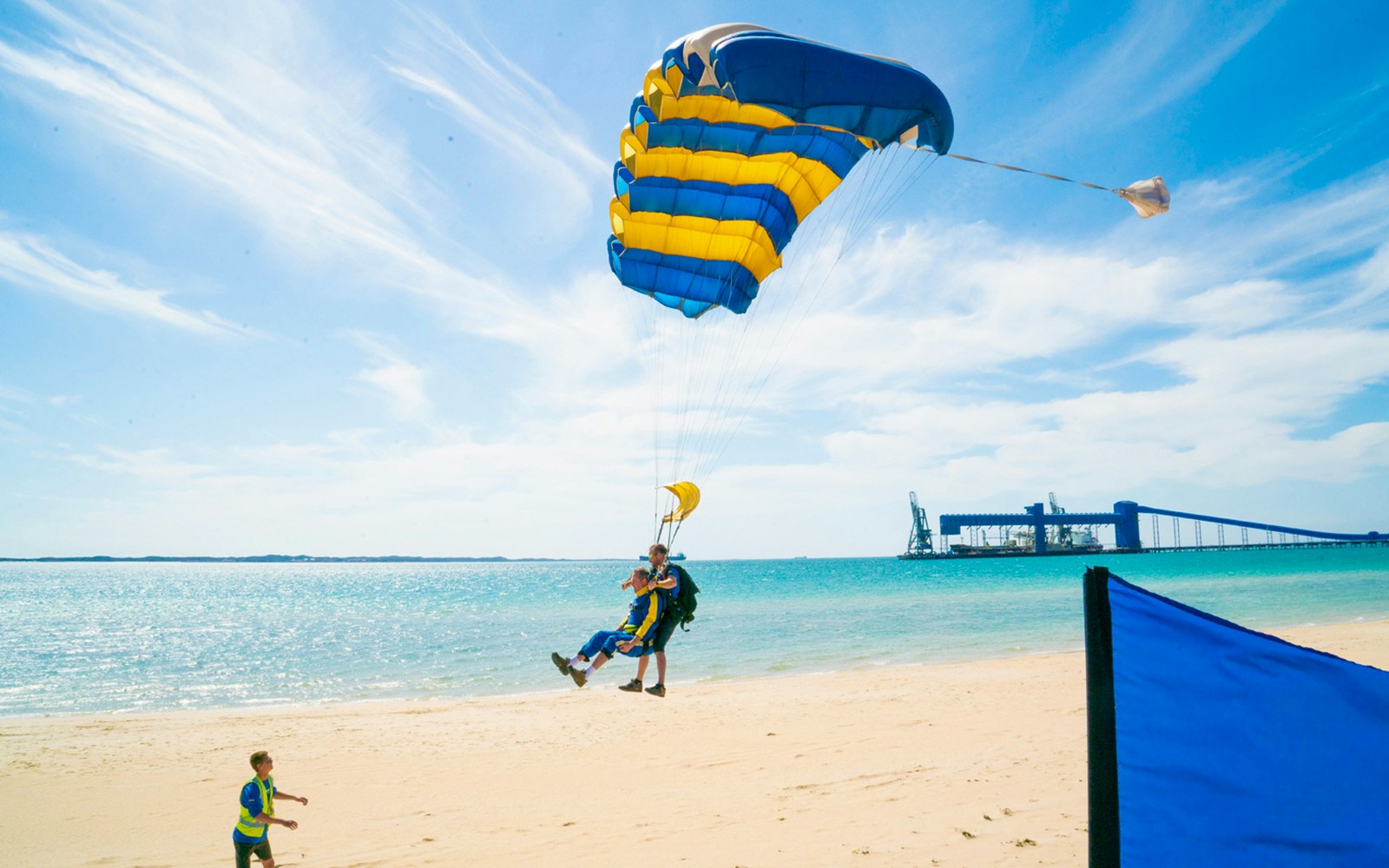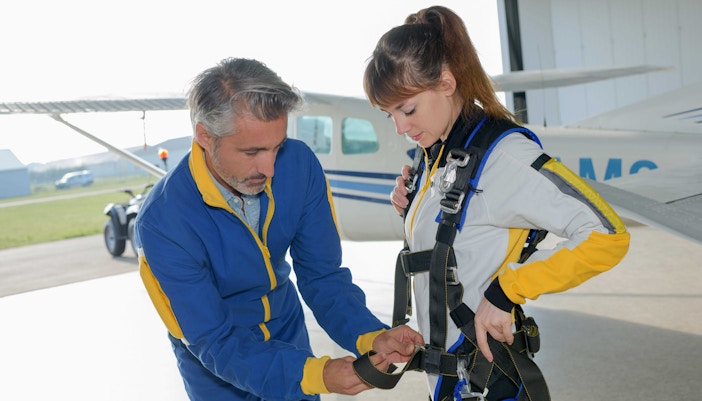With several dropzone locations to choose from, Australia offers some truly breathtaking views to divers. Watch the land meeting the ocean and concrete jungles meeting nature, through beaches, vineyards, and cityscapes.
Go Skydiving in Australia
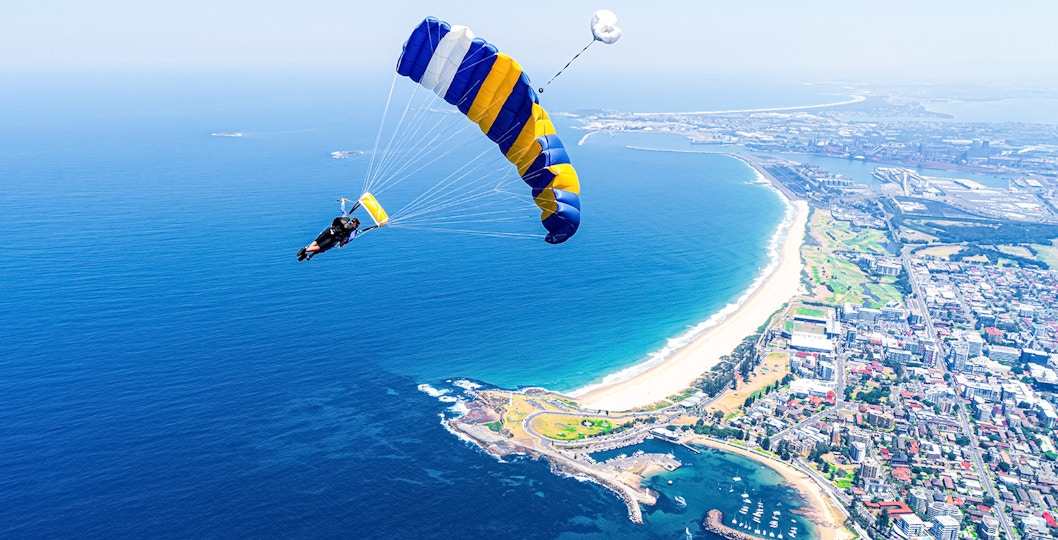
Top 5 reasons to be skydiving in Australia
Stunning sceneries
Best places to skydive in Australia
Types of skydiving you can do in Australia
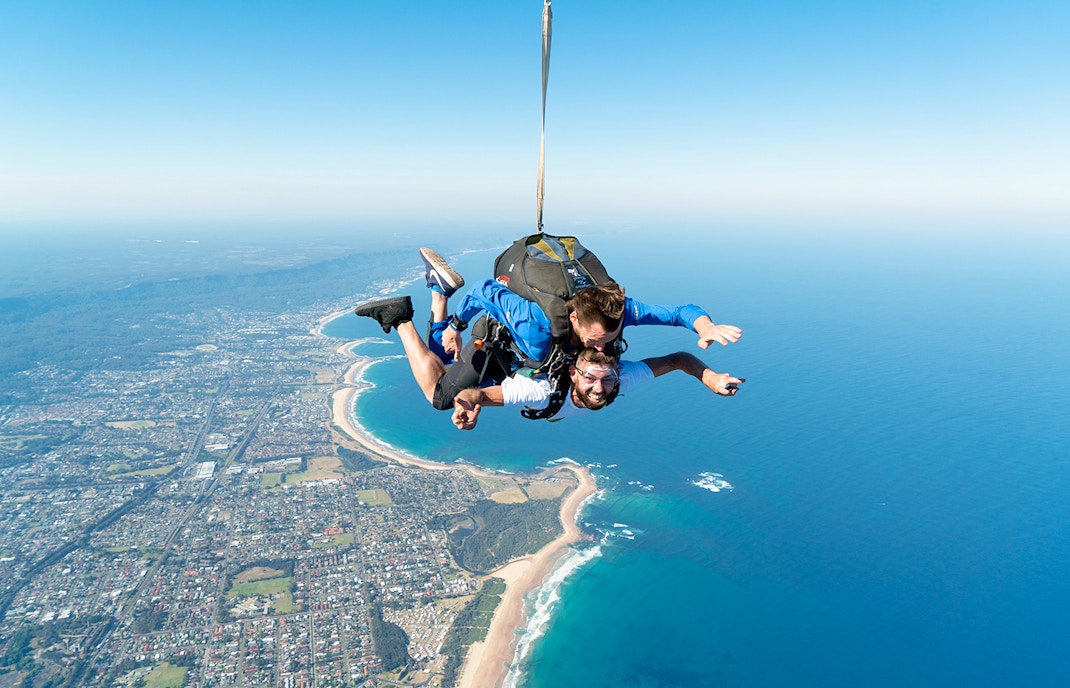
Outdoor Tandem Skydiving
- Experience the best kind of adrenaline rush on your free fall through the sky at various drop locations through the country. Don't worry though, you'll have a certified expert strapped to you, who will land you safely on ground.
- Outdoor skydiving has a strict age limit — divers need to be 16 years and older. Given the extreme nature of the activity, the prices are much higher compared to indoor skydives.
- You don't need to have previous experience or qualifications to tandem skydive — your instructors will handle all the equipment during the dive. All you need to do is enjoy the experience.
- You can choose between heights of 7,000ft and 15,000ft for your dives. The higher the height, the longer your free fall. Most free falls last between 30 seconds to 1 minute.
- There are plenty of tandem skydiving spots located all over Australia. Melbourne and Perth are two popular choices, with multiple drop zones. Also check out Byron Bay and Sunshine Coast for a more off-beat choice.
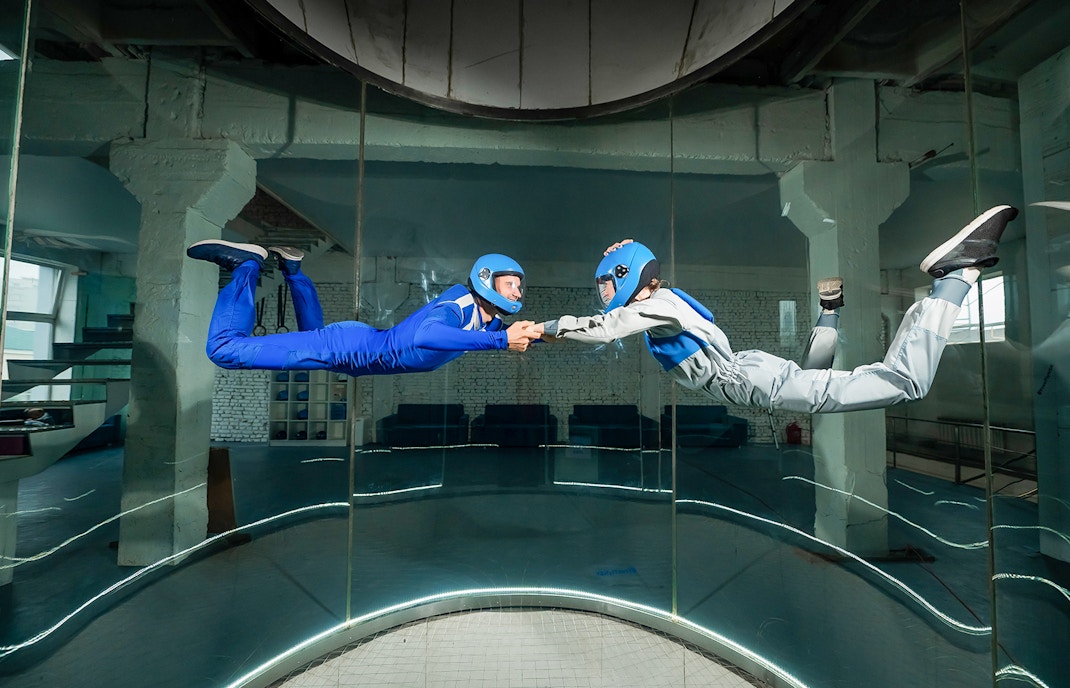
Indoor Skydiving
- Experience the feeling of a free fall inside the safety of a glass tube, with certified instructors to guide you.
- Indoor skydiving is inclusive to a larger age and weight group — kids as young as 3 years are allowed to dive. It is also easier on the wallet than outdoor skydives, but if we're being honest, nothing beats the views and experience of the real deal.
- Try your hand at indoor skydiving if you want to test your abilities, and eventually want to skydive in the great outdoors.
- Another perk is being able to fly solo — the instructor flies alongside you instead of being strapped to you. Each "flight" usually lasts 50 seconds, with each person getting 2 flights.
- Indoor skydiving centers are located inside the city and don't require a long commute to get there. Sydney and Gold Coast are great places to visit if you want to check out indoor skydiving.
Breaking down your skydive experience in Australia
Aside from arriving and checking-in at the venue, you're probably wondering what else goes on. Let's calm your jitters and take a look at everything you should expect on the skydive, right from safety briefings, to finally taking the plunge.
Views you can expect during your skydive in Australia
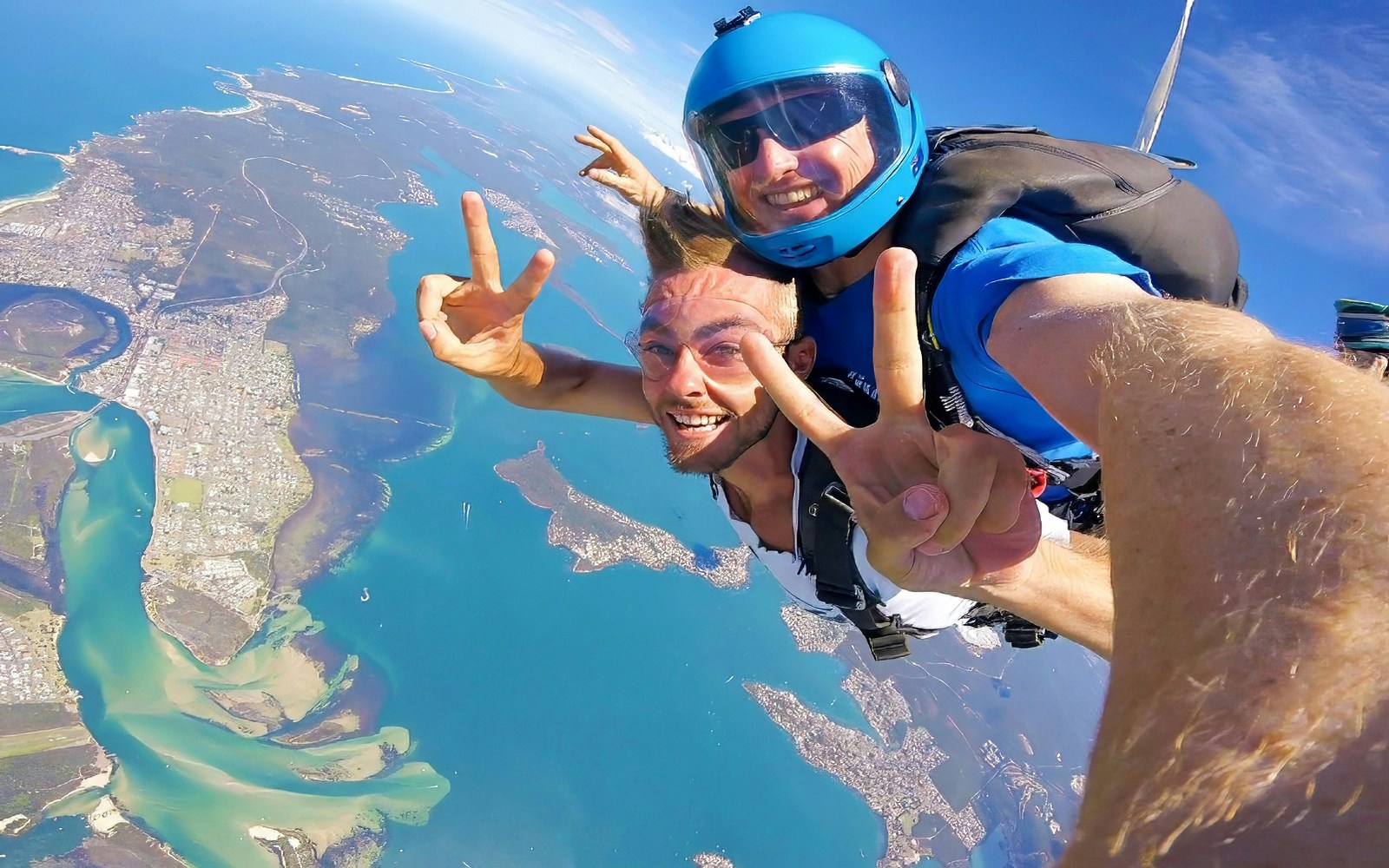
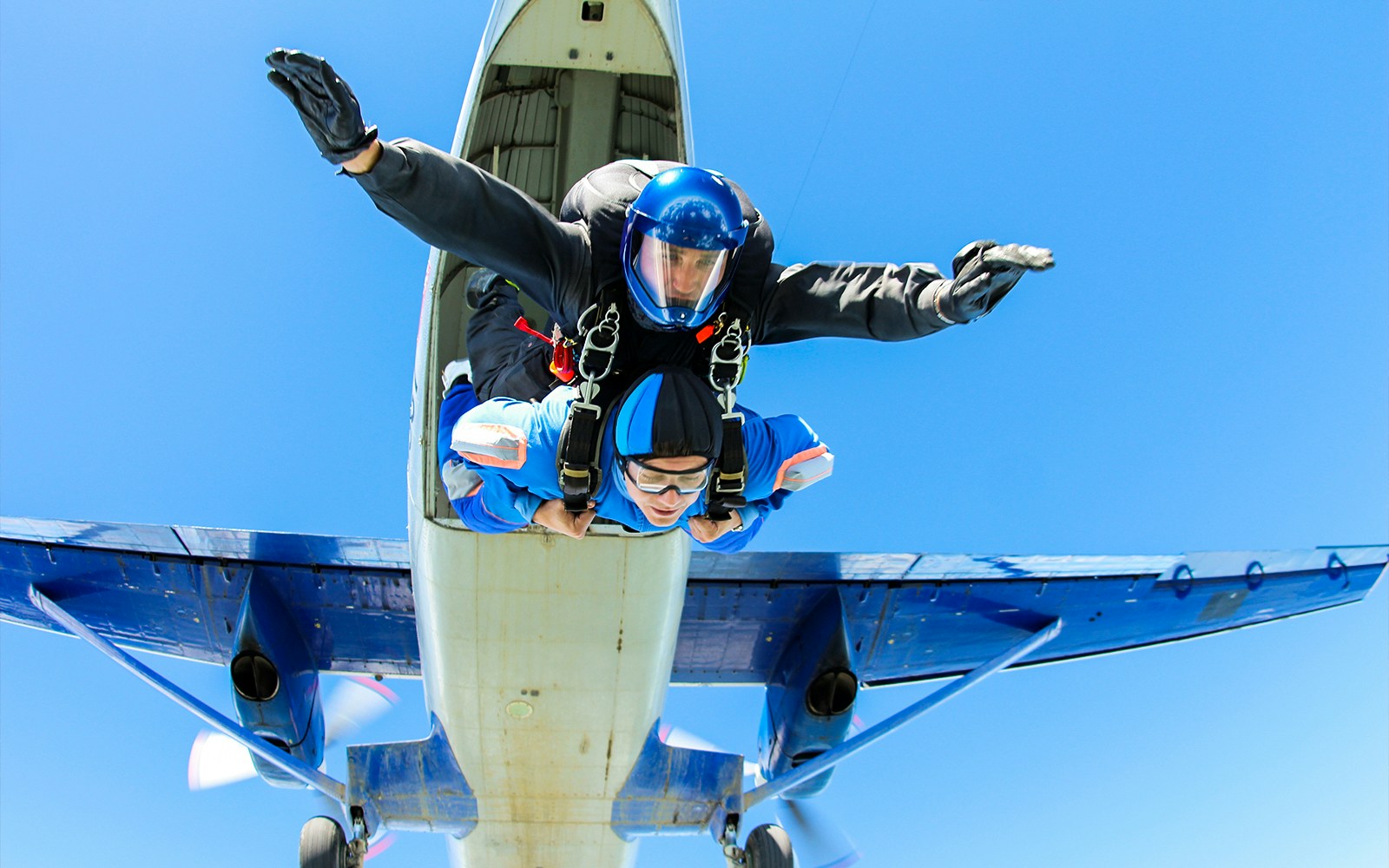
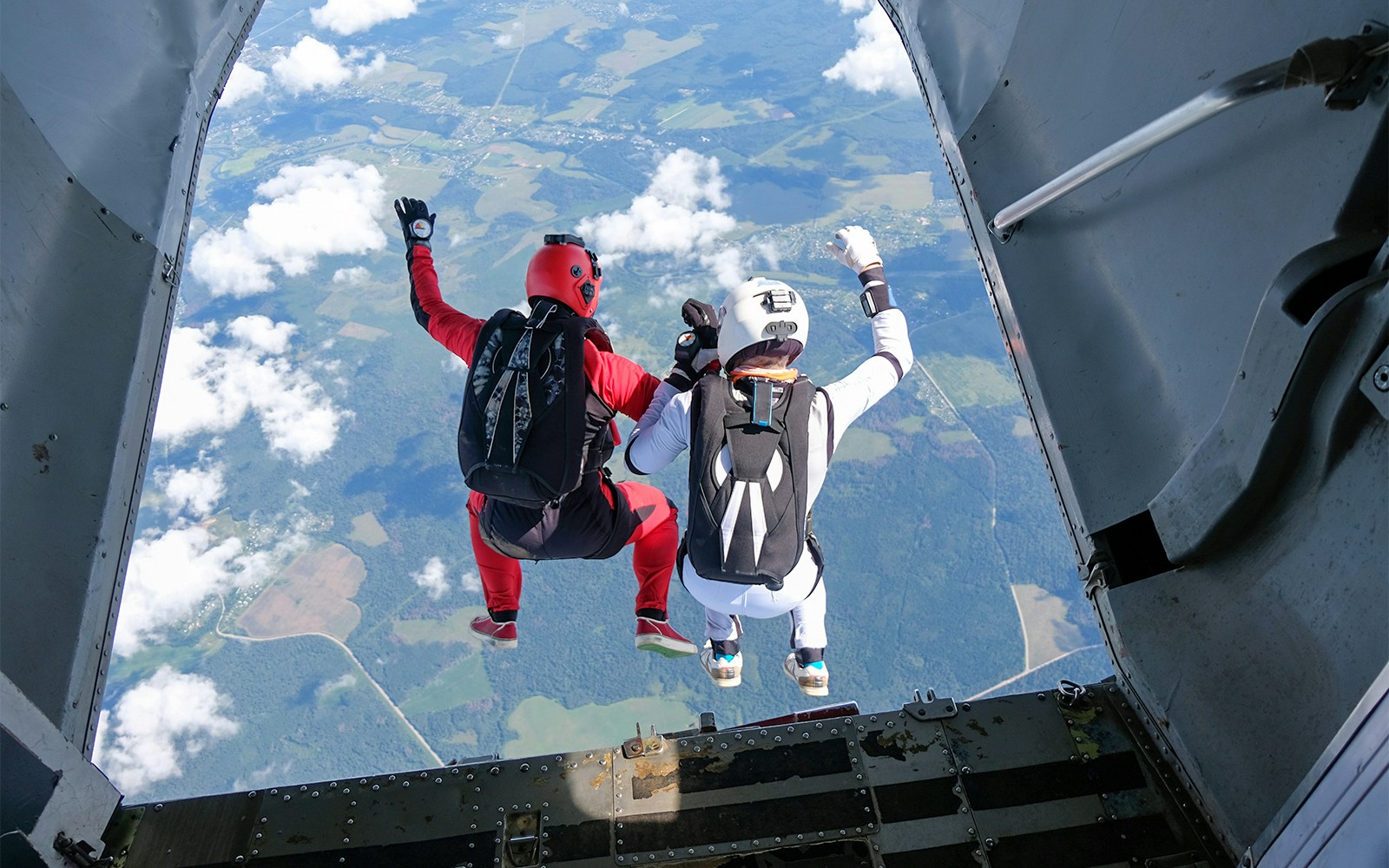
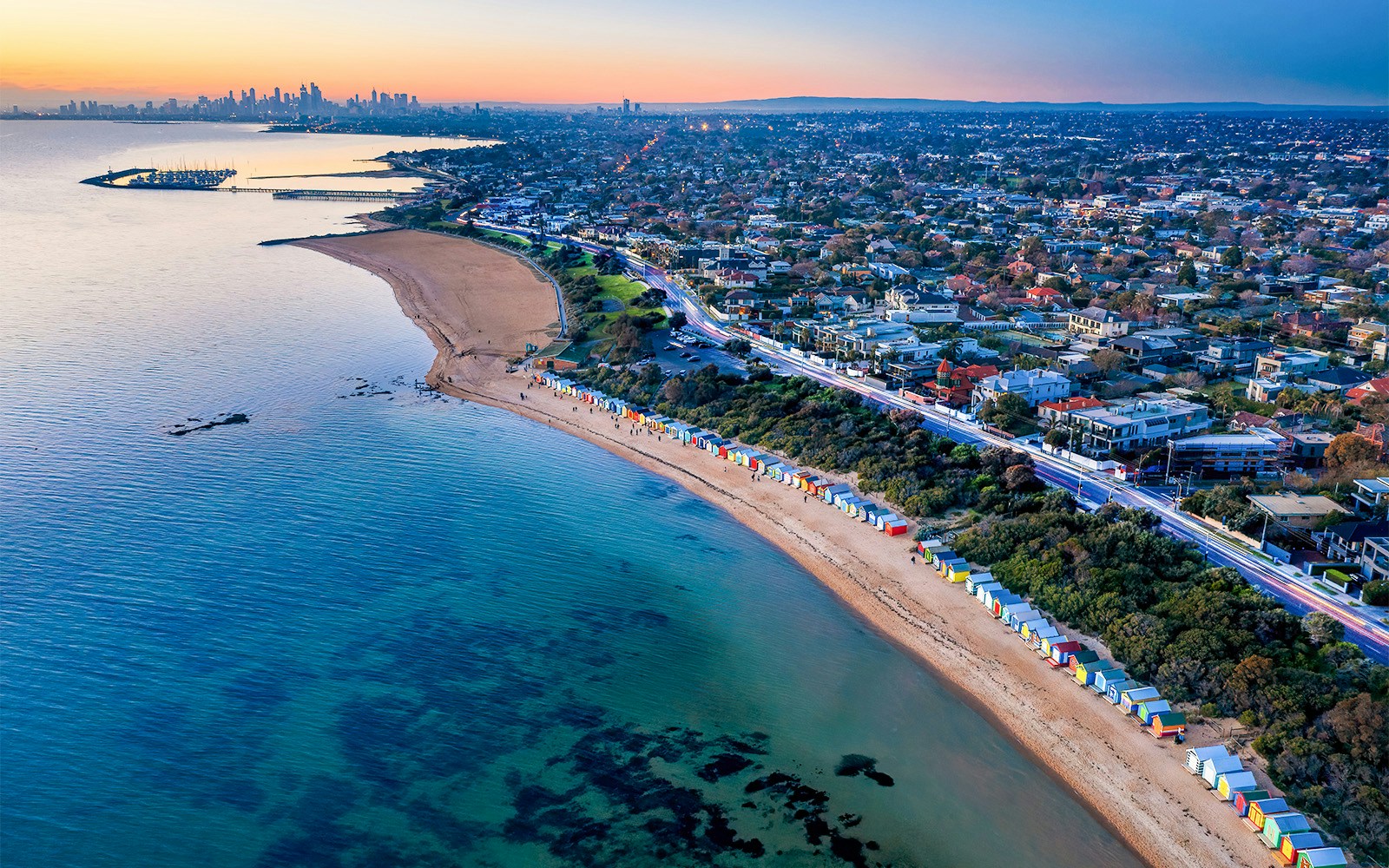
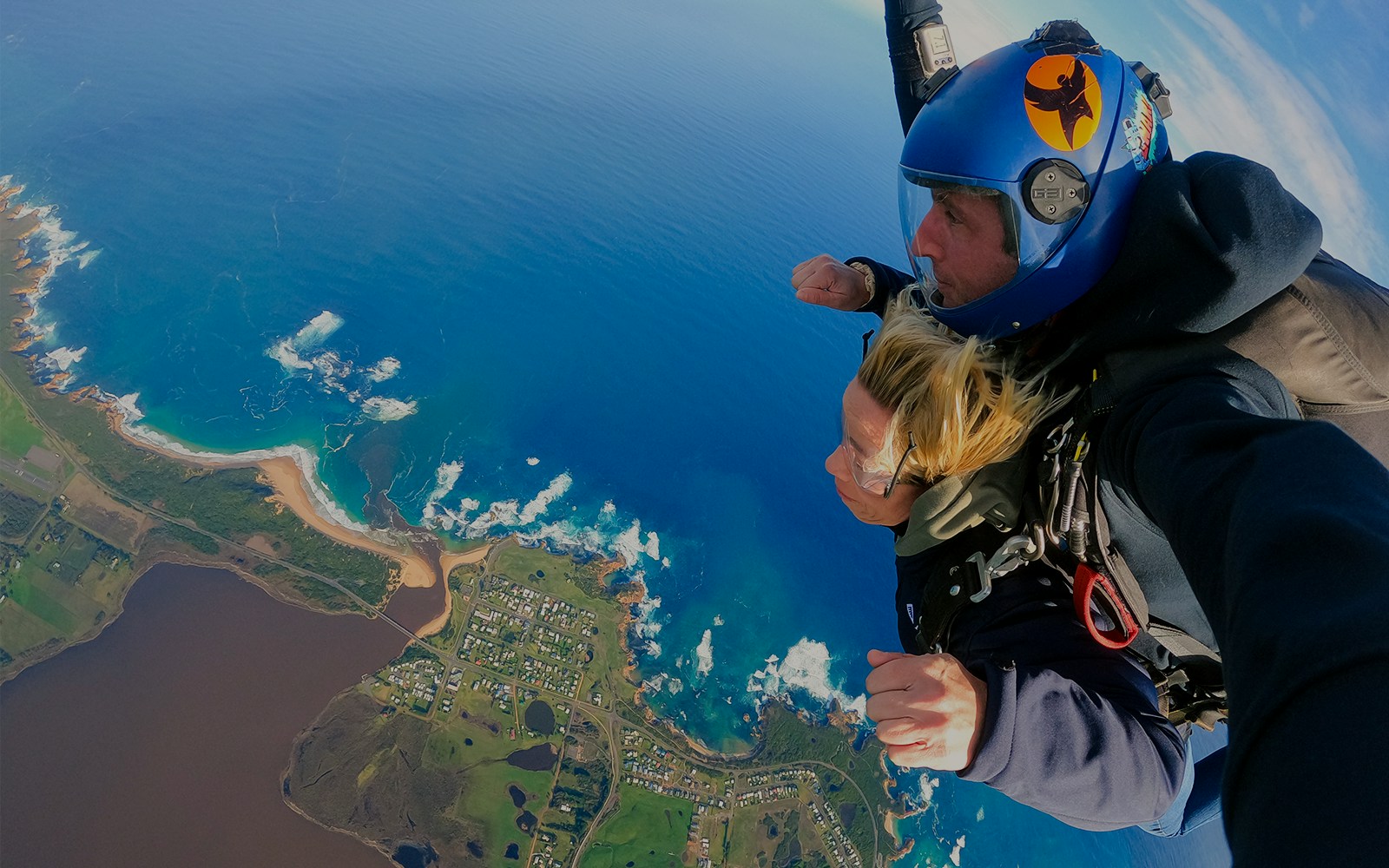
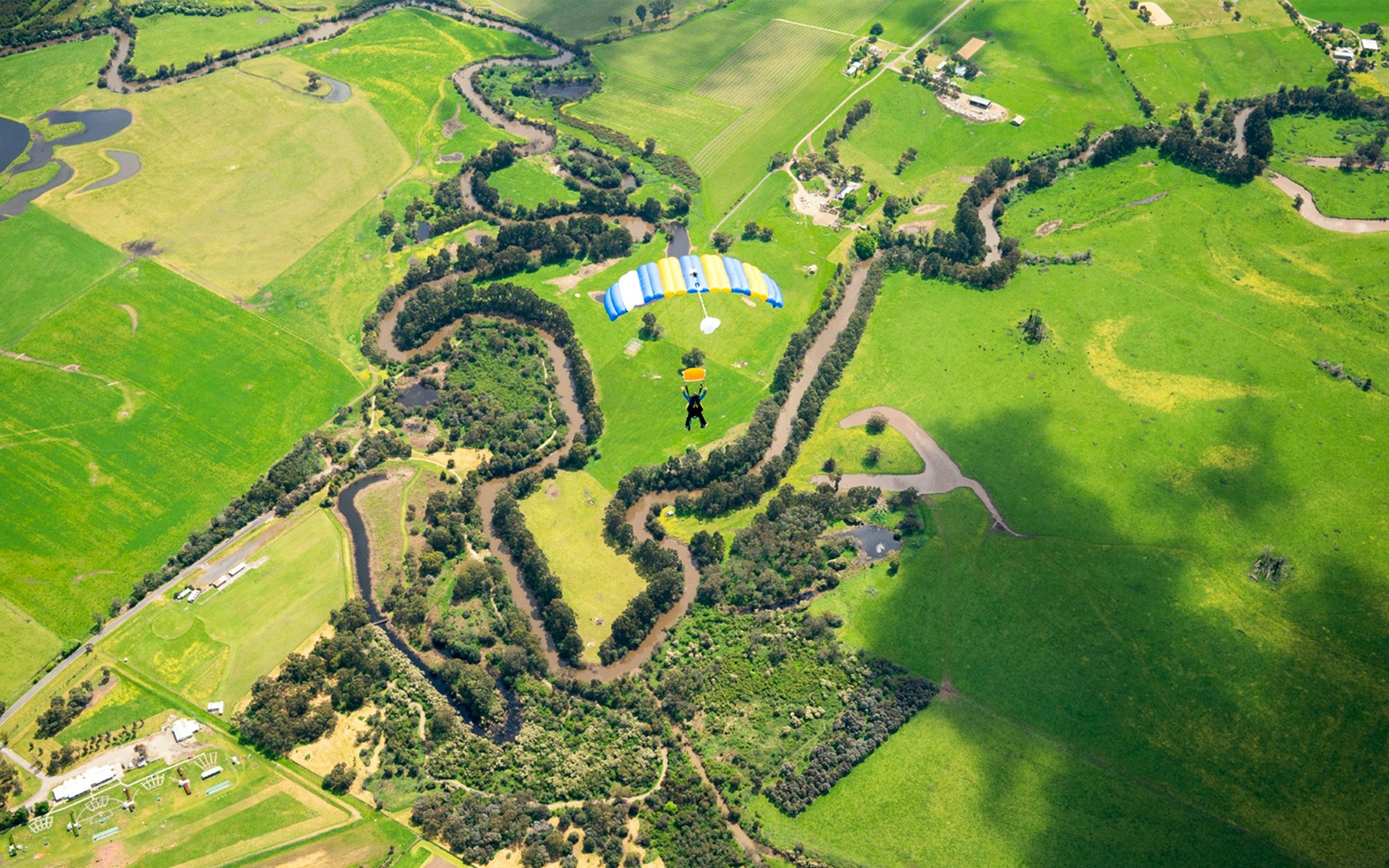
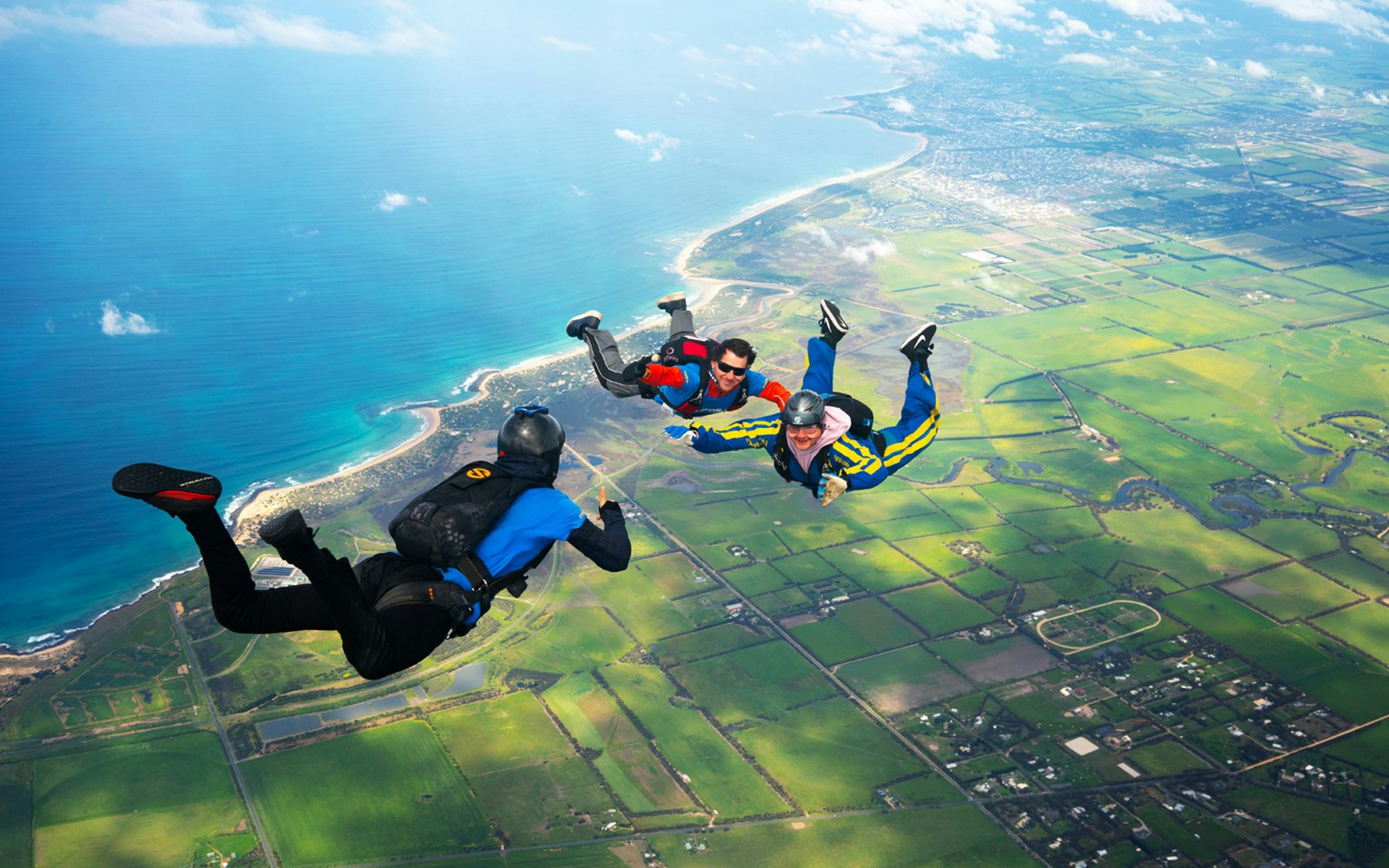
Things to know before you skydive in Australia
Tandem skydiving is strictly limited to guests 16 years and older. Kids under 18 will need a parent to sign the waiver before the activity.
The minimum age for indoor skydive is as low as 3 years old, given that the risks are much less and the dive itself happens in a controlled environment. This makes indoor skydiving a good choice for families with adventurous kids.
Health and physical fitness is very important during high adrenaline activities like skydiving. Most skydives in Australia require you to be under 95kg in order to skydive. If you are over the limit, you may have to pay extra to take part in the skydive (up to 110kg). Pregnant women, people with heart and lung issues are not advised to skydive.
Heads up: you cannot skydive if you have been scuba diving within the last 24 hours. If you have scuba'd within this time period, you will have to reschedule your skydive for another day.
Do not fast before your skydive. This can cause you to feel light headed due to the high adrenaline and low blood sugar. Feel free to eat light, non-greasy foods like fruit, cereals, and eggs. Hydrate properly and stay away from alcohol.
Wearing comfortable but not too loose clothing is important. Avoid wearing any chains or jewelery that can tangle or come off during the skydive. If you tend to get cold easily, dress in light layers. The jumpsuit you get at the venue adds to your layers, so you'll be nice and cozy during your jump. Wear close-toed shoes; slippers and sandals are not allowed.
Frequently asked questions about skydiving in Australia
While prices may vary based on the city, outdoor tandem skydiving tickets typically cost between AU$300 to AU$700, depending on the inclusions in your ticket like transfers, height options, photos and videos, etc.
Yes, it is always best to book your skydive weeks in advance, especially during the peak season when then chances of slots being filled out are high.
You can choose to skydive in various locations across Australia, including Sydney, Melbourne, Perth, Cairns, and Rottnest Island. Plan your travel well, as the drop zones are usually located away from the city center and will require some commute time.
All outdoor skydiving in Australia happens in the tandem style. Meaning, you will be joined by a Tandem Master to guide you through your dive. This is what makes it safe for beginners to skydive in the wild. If you wish to fly solo, the best option is to go indoor skydiving in the Gold Coast or Sydney.
While each dropzone location has its own speciality, there are some cities we definitely recommend. Sydney has a beach-side drop zone at Newcastle. Great Ocean Road and 12 Apostles near Melbourne give you various height options to choose from.
You do not need prior experience in skydiving with a tandem skydive. An expert Tandem Master will accompany you on your experience and control the fall and chute deployment for you. All you need to do is enjoy the beautiful scenery.
Technically, yes. But it is important to space out both experiences to avoid altitude complications. If you have been deep-sea or scuba diving within 24 hours of your skydive, you will need to reschedule to another day.
It is important to be in good health on your skydive. You will be exposed to the open skies at great speeds, which will worsen any kind of cold or flu you may have during the dive. Please reschedule your skydive in case you fall sick.
Pregnant women are advised to avoid tandem skydiving. This is to ensure that there are no complications at the fall height and that your baby remains healthy.
In case of unforeseen cancellations of your skydive, you will be provided with credits by the skydiving facility, which are valid for the next 12 months. You can use these credits to reschedule your dive for any other day within validity.
Once booked, you will be unable to cancel your skydiving tickets. However, you can reschedule it to any other day up to 24 hours before the dive.
In most places in Australia, you can choose your drop altitude, anywhere between 7,000ft and 15,000ft. The higher the drop, the longer your free fall! Free falls usually last between 30 seconds to a minute, depending on the height.
You cannot bring your cameras or go-pros on the skydive. However, you can choose to add photos and videos to your skydiving experience, which means your instructor will film you during the dive.
You need to be minimum of 16 years or older in order to skydive in Australia. Children below 18 will need a parent's signature on their forms.





